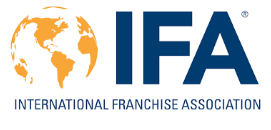Expanding your franchise’s footprint and making it a more attractive investment to potential franchisees is accompanied by a well-choreographed process that feeds your sales funnel and, hopefully, ends with the opening of a new location. Think of it as a high-stakes corporate dating profile. Before you get to the proposal, you need dad’s permission for the first date. That means thinking about potential lenders reviewing what a franchisor has to offer candidates. Let’s dive into the reasons for educating them on how to navigate the lending process and how to effectively communicate the details of Item 19.
Why it matters now more than ever
If you don’t meet their standards, they’re going to swipe left in a hurry. In the current hot market of franchise sales, you don’t want to leave that to chance.
“Starting franchises right now after COVID has actually been one of the hottest times in franchising, really, because people got really frustrated with their employers and jobs and being reliant on other people for their income,” says Chad Carter at Lendio, a franchise company that specializes in small business financing. “A lot of people said, ‘Screw this, I’m going to go open my own business,’ but they don’t really know how to open their own business, so they buy a franchise.”
Teach them about your company’s Item 19
How do you keep an up-to-date profile to ensure a potential suitor keeps coming around? Filling out your company’s Item 19 on your Franchise Disclosure Document (FDD) and keeping it current is a start, says Carter. In Item 19, a franchisor may provide information about the historical or projected financial performance of the franchisor, franchisees and company-owned units.
“That absolutely is helpful to lenders,” he says. “Depending on the franchisor, the Item 19 can be written better or worse.”
In Carter’s experience, about 30 percent of companies leave this portion blank and even more don’t bother to update it regularly. Item 19 is the only optional section in the FDD, but it’s a crucial piece of information that can help lenders determine whether your franchise is a viable investment for candidates – and for lenders who will help them start their business.
Tell your company’s story
Item 19 helps tell your company’s story, and with the last few tumultuous years, companies have a lot to tell. How did your franchise weather the pandemic? Did shutdowns hurt profitability or stunt expansion? How about issues with supply chains or difficulty in finding staff? Many small businesses, especially, have had to deal with these challenges, and Item 19 can help explain financial fluctuations and make your franchise a more attractive option to franchise candidates and lenders.
“They could say, for the last seven years we’ve had X percent of growth, but during COVID we had this percent of growth because our stores were shut down,” he says. “It makes sense because so many franchises are food-related. They absolutely would have been affected by COVID shutdowns. That’s definitely information people are plugging back into their Item 19s, especially with the Paycheck Protection Program money businesses received. You’d want to put that in your Item 19. This shows that all these businesses got injected with cash from the government. If you don’t, that could be seen as deceitful.”
There are other ways for franchisors to help prospective buyers navigate the lending process.
Get listed in Small Business Administration’s directory
For emerging franchises, getting on the Small Business Administration (SBA)’s directory and registry is key. Many franchise candidates seek government-backed loans from the SBA. They are the most common and specifically serve first-time franchisee borrowers. But they need to meet requirements to secure financing.
Franchises must list themselves in the SBA directory for a candidate to get a loan from the SBA. This is true for franchises that are both established or emerging. The SBA’s registry indicates whether certain brands should obtain financing.
“In franchising, it’s kind of nice because a company can get listed with the SBA as an approved franchise, and if it’s approved, you will be eligible to get an SBA loan to start a franchise,” Carter says. “However, I’ve never seen a lender allow someone to get an SBA loan to purchase a franchise that isn’t listed.”
Partnering with lenders
Another way to help your prospective franchisees navigate the lending process is to partner with preferred lenders. In many cases, partnering expedites the lending process and allows candidates to get approval for financing more quickly.
The benefits of having preferred lenders are that they are already familiar with your company. This often includes its financial performance and any challenges it may face.
“If a lender is comfortable with your business model, they are going to do less necessary fact-gathering and documentation,” Carter says. “They will have most of that down and will only have to patch the holes that are unique to you instead of answering general business questions. It definitely makes things easier.”
Include information for existing franchisees’ lending needs
Not everything related to lending focuses on first-time borrowers. Existing franchisees need lending services, too. And there are other ways franchisors can help, Carter says. Part of that revolves around financial document accounting practices.
“It would be in their best interest to have accounting rules laid out for franchisees so that their books look really clean and to create a system where they are organized from a financial statements perspective,” he says. “Having records in place and having a good system for making sure your finances and taxes are in order will make it a lot easier to get financing.”
Every lender wants to see tax returns and financial statements on hand, he adds. “Having that stuff around and at the ready is paramount.”










